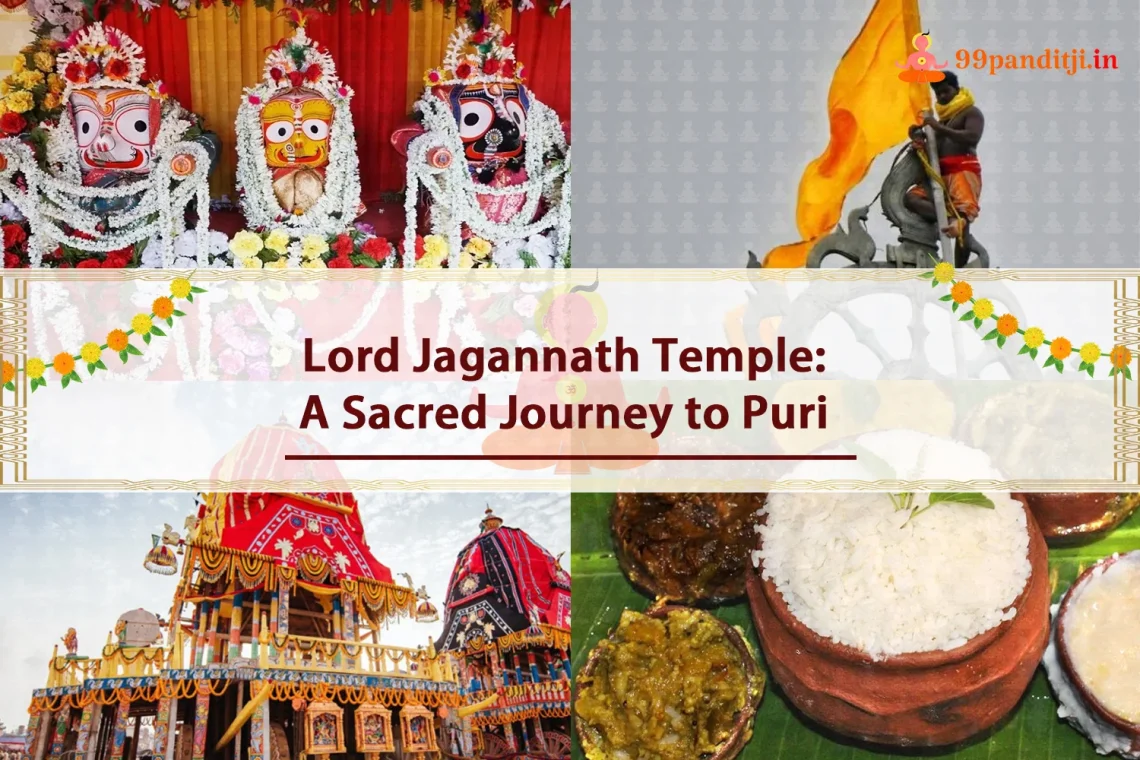Lord Jagannath temple in Puri, Odisha, is one of the prominent temples that keeps a special place in pilgrims’ hearts. This revered site draws millions of pilgrims and travelers every year. Its ambiance goes beyond the complications of its architectural beauty, driving it into a depth of religious significance and ancient customs upheld for centuries.
This is called the ‘Abode of lord Jagannath’ (incarnation of Lord Vishnu); the temple is a climatic place and one of the Chardham – the four sacred pilgrimage places in Hinduism.
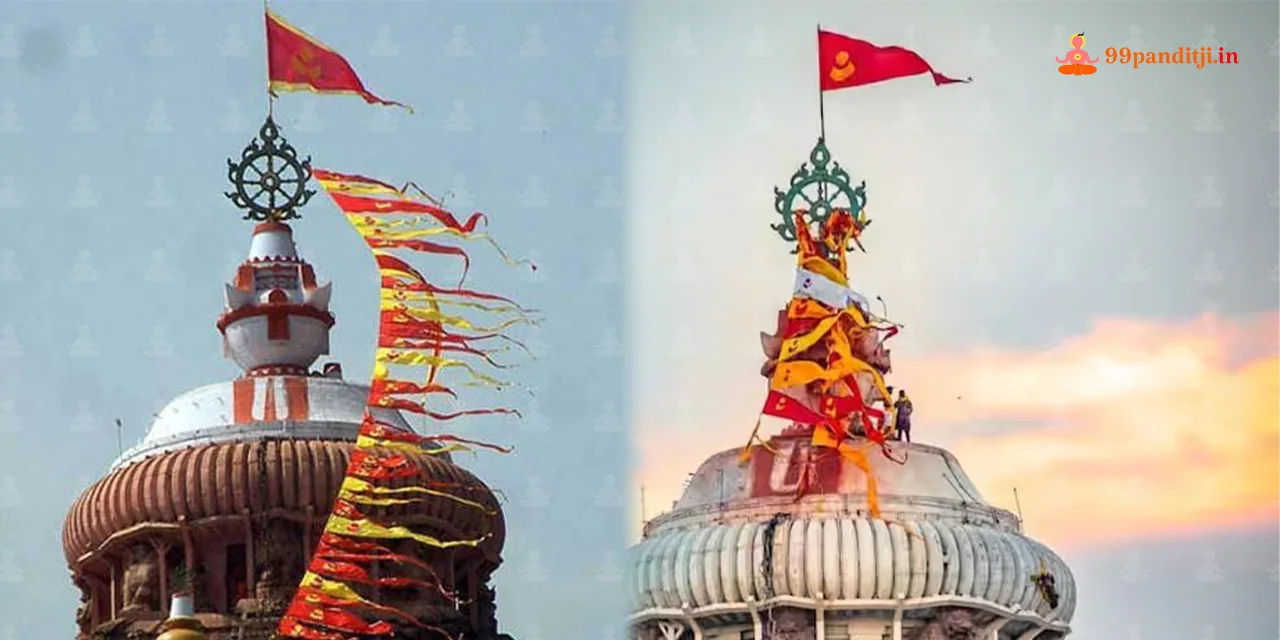
The temple has a rich history, vibrant customs, and profound spirituality, giving visitors an immersive experience of the core of Indian devotion. The legend says that entering the temple allows devotees to achieve moksha or salvation, making it a lifelong dream for everyone to visit at least once.
The Temple’s Unique Legends & Rituals
The heart of the temple’s spirituality lives in the main deity, lord Jagannath. The Lord is situated in the temple along with his siblings, Lord Balabhadra and Goddess Subhadra. The deities are made from wood and renewed every 12 to 19 years in a custom called Nabakalebara, unlike typical idols.
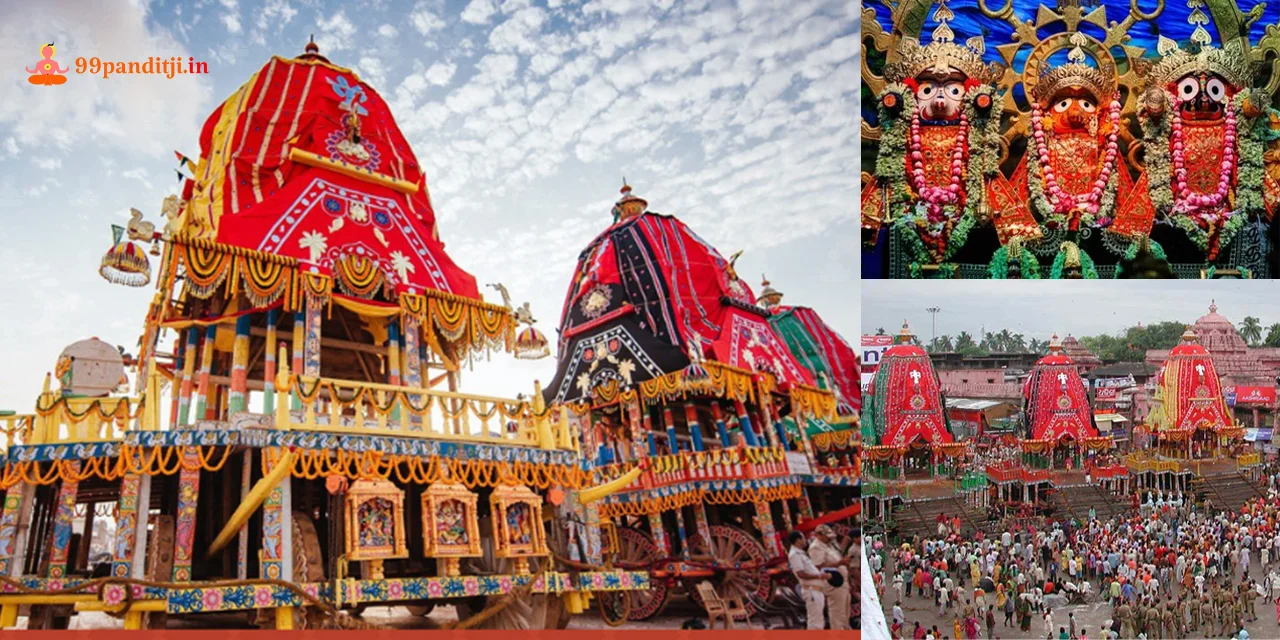
The custom of renewing is a sign of the eternal cycle of life and death and shows the temple’s strong connection to the cosmic period. They organize regular rituals, which include offerings, prayers, and the popular Mahaprasad (the temple’s sacred food offering), carefully. They prepare the Mahabhog without using firewood in clay pots stacked on top of each other. This is a testament to the temple’s sacred culinary practices. The sacred food is shared among devotees, manifesting the spirit of community and unity.
Lord Jagannath Puri Temple’s History
The sacred history of Jagannath Puri temple is back to the mystery, weaving a story of devotion and religious intervention. Devoted to lord Jagannath, an incarnation of lord Vishnu, the religious Hindu temple keeps a special place in the hearts of millions of people.
According to ancient legends, lord Jagannath was first honored as Neela Madhaba in a forest by King Viswavasu. King Intradyumna sent his Brahmin Pandit, Vidyapati, to search the divine place fascinated by the deity. Vidyapati managed to search the concealed cave where the lord was revered, encouraged by his love for Viswavasu’s daughter, Lalita. King Indradyumna set out to locate the idol in Odisha after discovering the existence of the deity. Despite early obstacles, he built a temple on top of Nilasaila, also known as the Blue Mountain, under divine direction.
However, as a result of Brahma’s extended concentration, the temple was covered with sand.
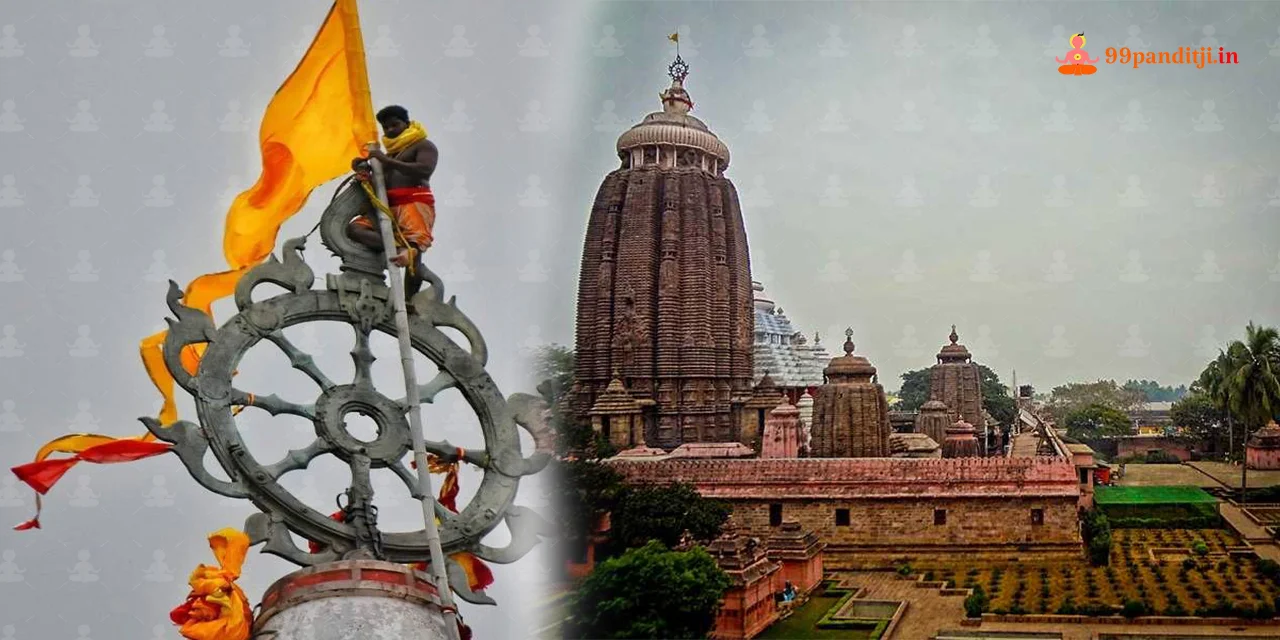
A heavenly voice told King Indradyumna to sculpt idols out of a floating log on the beach. With unshakable conviction, he built a splendid temple that housed the wooden statues of Lord Jagannath, Balabhadra, and Subhadra. This story of tenacity and supernatural intervention highlights the ethereal atmosphere of the Jagannath Puri Temple.
Notwithstanding difficulties and barriers, the temple continues to stand as a testament to dedication and spirituality, beckoning pilgrims to delve into the enigmas surrounding its historical beginnings and deep meaning.
The Sacred Rath Yatra
One of the most sacred experiences everyone wants to have is participating in the Jagannath Puri Rath Yatra. Thousands of followers travel across Puri every year to witness the grand Chariot celebration. The occasion is performed on the second day of Asada month (according to the Hindu calendar). In the chariot festival, three chariots are created annually.
On the initial day, the models of lord Jagannath, Lord Balabhadra, and Subhadra are placed in different chariots and moved with huge processions to the Gundicha temple. This is the house of Lord Jagannath’s aunt, which is a few kilometers away.
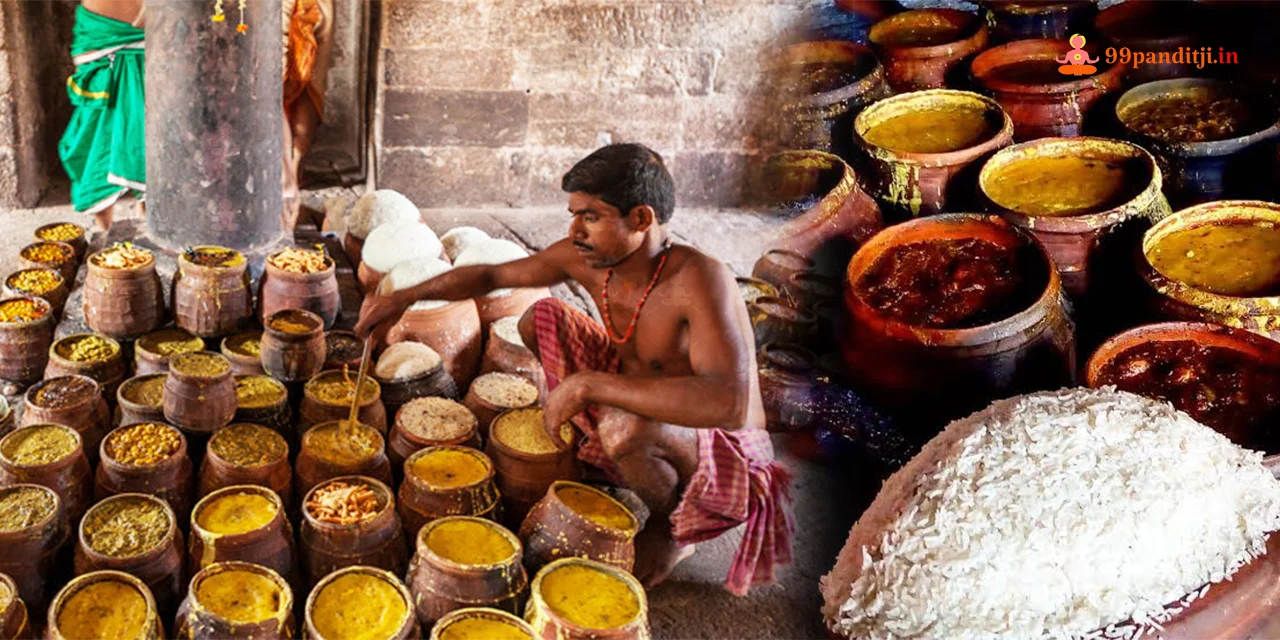
They bring the idols back to the temple on the 10th day, and they call the return journey Bahuda Yatra. The worldwide popular Rath Yatra shows that divinity is accessible to everyone, while it empowers followers from all over the world to be a part of and pull the chariots.
A few other festivals celebrated in the temple are Shree Krishna Janma, Jhulan Yatra, Ganesh Chaturthi, Balabhadra Janma, Saptapuri Amabasya, Chitlagi Amabasya, and more.
Mysteries of Lord Jagannath Temple
The temple covers some unbelievable science, miracles, and mysteries. Historians, scientists, and even Pandit himself could not find the Jagannath Puri temple mystery. Let’s check out what these mysteries are.
1. Direction of flag
Following the 1800-year-old tradition, the flag on the top of the temple changes every day. And the most fascinating mystery of the temple is its direction of it. During the day, the breeze blows from land to sea, and in the evening, it blows from sea to land. Contrary to the flow of wind, the flag flutters in different directions. The pandit climbs the temple daily to change the flag, and if the ritual is not performed, the temple will be closed for 18 years.
2. The Sudarshan chakra
Sudarshan chakra, or Nilachakra, is scaled on top of the temple. Looking from below, it appears the same everywhere, in different directions.
3. A light with no darkness
Another mystery of the temple is the absence of shadows. Of the time and sun’s position, the temple has no shadow, giving doubt on whether its structure is a marvel or a divine miracle. This strange absence of darkness gives the temple a mystique, drawing visitors about the unknown forces within its sacred confines.
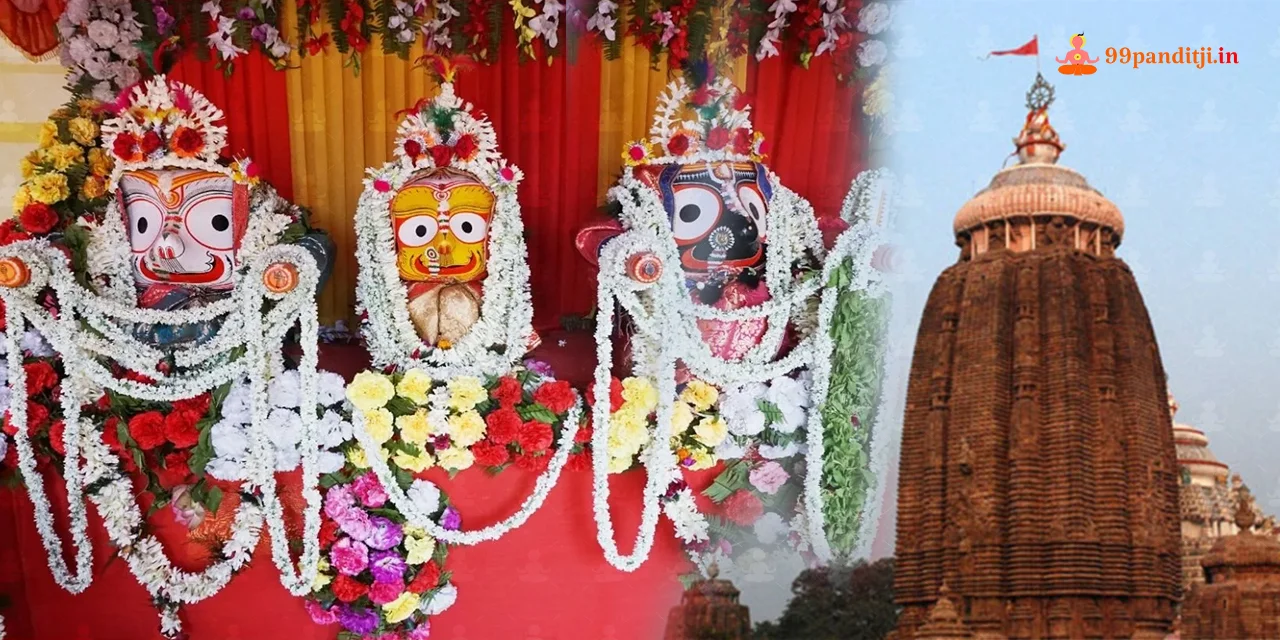
4. Wooden idols
Following the sacred custom, the renewal of wooden idols during Nabakalebara. The idols are renewed every 8,12, or 19 years and created from specially selected neem trees, and their crafting is done mysteriously. The custom was finished within 21 days, and the old models were substituted and buried near Koili Vaikuntha.
5. Nothing flies above the temple
Not a single bird can be seen sitting on the top of the temple, unlike other typical temple structures. Also, not a single aircraft flies over it. This divine force declared it as a no-fly zone, added to the temple’s mystique, gauged visitors, and left them in doubt of unseen forces.
6. Missing sound of sea
An interesting fact to notice once you enter the temple is that you cannot hear the sound of the waves. This sound disappears and you can hear it again when you come out of the temple.
7. Mahaprasad preparation
The temple’s kitchen contains over 250 hearths, where they prepare 56 dishes every day for nearly 20,000 people and 50,000 on special occasions, and they waste not a single morsel. However, the most intriguing feature of the kitchen is the arrangement of earthen pots, where they cook the pot on top first. Only the servants, who are allowed entry, know the temple’s culinary methods and do not allow guests in the kitchen.
Architecture of Lord Jagannath Temple
The architectural description of Lord Jagannath temple is truly a marvel to behold. Its classic Oriya structure stands as a key to ancient artwork and devotion. The temple has two imposing rectangular walls, including an expansive area of around 4,00,000 square feet. The outer wall, called Meghanada Pacheri, stands tall at 20 feet, while the inner one, Kurma Bedha covers the main temple and makes a sacred shelter.
The core of the temple grows the majestic shikhara, or tower, locating the revered deities. The temple has four different structures positioned in rows: the Vimana, Jagamohan, Nata mandir, and Bhoga mandap; every exudes brilliance and religious significance.
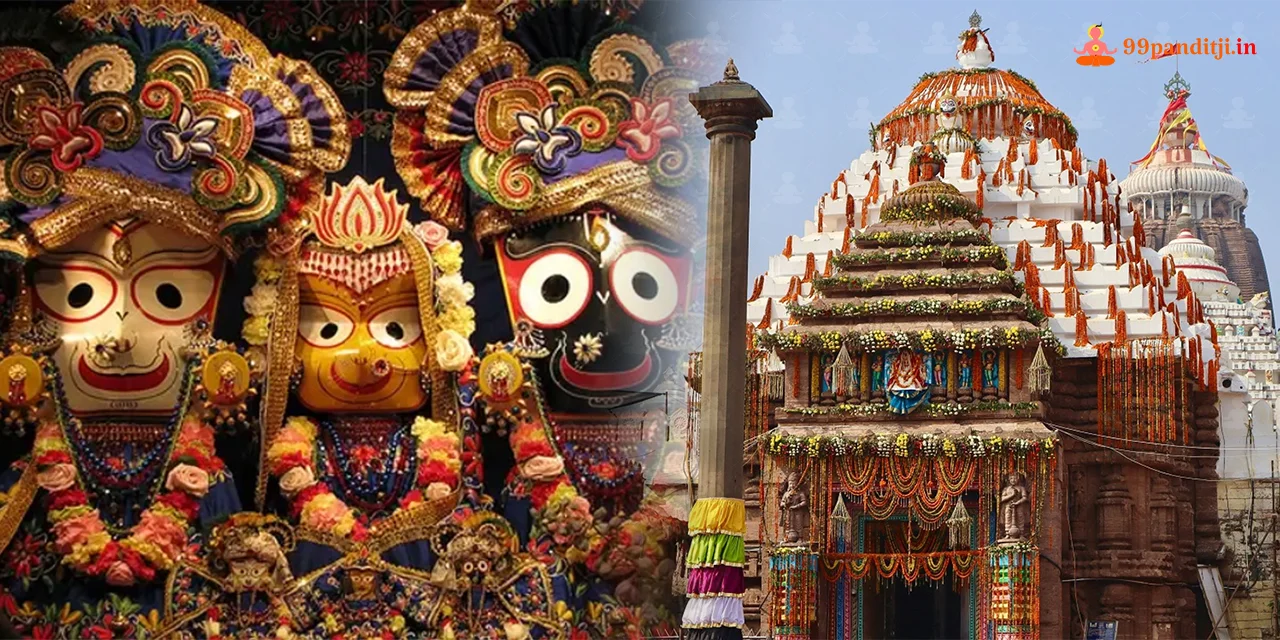
The temple complex features four elaborate gates, each representing a distinct animal motif: the northern Hastidwara (Elephant Gate), the southern Ashwadwara (Horse Gate), the western Vyaghrasana (Tiger Gate), and the eastern Singhadwara (Lion Gate). The Lion Gate on Grand Road serves as the primary entrance, welcoming devotees into its hallowed grounds.
They make the famous Nila Chakra, also known as the Blue Wheel, from several metals, and it sits on the temple’s pinnacle. Every day, a fresh flag is ceremoniously raised atop this hallowed wheel to represent the blessings and protection bestowed by God onto the faithful. The architecture of the Jagannath Puri Temple captivates tourists with its beauty and holiness, serving as a timeless witness to India’s rich spiritual and cultural past.
How to Reach Jagannath Puri Temple?
You can select the convenient mode of transportation to reach Jagannath Puri, whether by bus, train, or flight.
By air – To reach Jagannath temple is quite comfortable. If you are traveling by flight, the nearest airport is Bhubneshwar, around 56 km away. Then you can book a taxi or local bus to reach Puri.
By road – Regular buses are available from Vishakhapatnam, Kolkata, and Bhubaneshwar.
By rail – You will get many trains to stop at Puri railway station as it lies along the Calcutta-Chennai.
Best Time to Visit Jagannath Puri Temple?
If your family plans to visit Lord Jagannath temple in Puri, they consider the months of May to July pleasing. Apart from the heavy rainfall during this monsoon season, the months have a few of the most vibrant festivals in the temple, including the popular Rath Yatra.
The weather may not be perfect, but being a part of these stunning celebrations is an experience like no other. Be ready for higher prices and larger crowds as people from around the world discover the divine events during auspicious times.
Points to Consider While Visiting Jagannath Temple
- The temple is off-limits to non-Hindus.
- Mobile phones, cameras, leather items, and shoes are prohibited within the temple.
- There are free shoe and cell phone stands on the property.
- The temple offers both first-aid services with qualified medical professionals and ambulance service.
- The complex has access to clean water facilities.
- Seniors and people with physical disabilities can use free battery-powered vehicles from Market Square all the way to the temple’s Main Gate or North Gate. Additionally, the property has ramps and wheelchair accessibility.
Conclusion
The Jagannath temple is not a place of honor but a cultural destination where art, devotion, science, and tradition merge effortlessly. Here, every ritual, every meal, and every mantra resonate with a sense of reason and a dedication to the divine. Discovering the Jagannath temple is not only a physical journey but a religious experience that gives salvation, wisdom, and a profound connection to timeless rituals.
Frequently Asked Questions
The Jagannath temple in Puri keeps a special place in the pilgrim’s heart and is popular for its structure, festival, and religious importance.
The heart of the temple’s spirituality lives in the main deity, Lord Jagannath, along with his siblings, Lord Balabhadra and Goddess Subhadra.
In the 10th century CE, King Anantavarman Chodaganga Deva of the Eastern Ganga dynasty constructed the temple in Puri.
Rath Yatra is a special festival performed in Puri, where thousands of devotees travel every year to witness the grand Chariot celebration. The occasion is performed on the second day of Asada month (according to the Hindu calendar). In the chariot festival, three chariots are created annually.
The idols of deities in Jagannath temple are renewed every 8,12, or 19 years and created from specially selected neem trees, and their crafting is done mysteriously.

